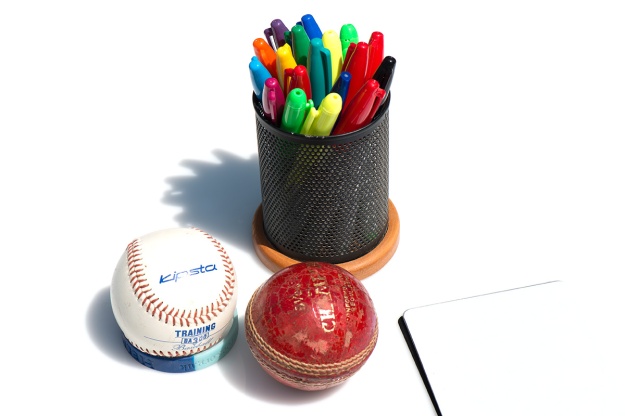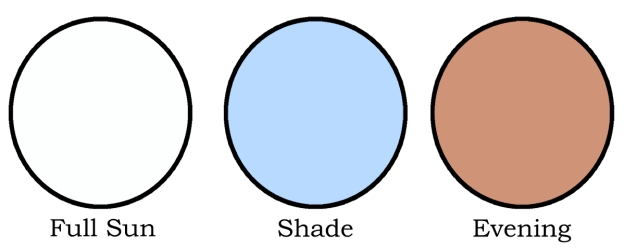The idea behind exercise 28 is to take three photographs of the same subject with the camera’s white balance set to “daylight” in firstly, the mid-day sun, secondly, the mid-day shade and lastly in the evening sun.

Fig. 01 Mid-Day Sun with Daylight White Balance 1/180 at f13, ISO 100

Fig. 02 Mid-Day Shade with Daylight White Balance 1/20 at f13, ISO 100

Fig. 03 Evening Sun with Daylight White Balance 1/125 at f5.6, ISO 100
I reshot the evening sun on a different evening as, during the first attempt, there was a build up of cloud that was distorting the results.
The mid-day sun photograph has very crisp whites and the colours are rendered very accurately. The mid-day shade has a distinct blue tint and the evening sun produces a orange/pink tint.

Fig. 04 Comparison of True White
This is best seen by comparing the true white of the “white balance card” as shown in fig. 04.
The explanation for this effect is that, in the middle of the day, 85% of the light that falls on a subject is coming directly from the sun with just 15% coming from the rest of the sky in the form of diffuse sky radiation. Diffuse sky radiation is the term used for solar radiation reaching the earth’s surface after having been scattered from the direct solar beam by molecules or suspensoids in the atmosphere. This light appears blue.
If the subject is in the shade it will only be lit by the sky and any reflected sunlight from, for example, a pavement or a photographic reflector. Because the subject is only lit by the sky it is bathed in blue light as can be seen in fig. 04.
The evening shot in fig. 03 and to the right of fig. 04 was a little surprising, It was taken about an hour before sunset but I was having to wait for gaps in the cloud and I wonder how much this might have impacted the result. I was expecting more of a warm orange glow but the evening light changes so rapidly that minutes before or after might have been quite different. The developing clouds did not give me this luxury. However, it does show that the evening sun provides a warm visual effect.
In reality the evening sun or reddish light is cooler in temperature than the blue light in the shade at mid day.
With film photography these changes in colour temperature and the colour of the light was important to understand. Photographs taken in full shade could have a distinct blue cast which was generally unattractive although photographers complained less about the orange tint provided by the evening sun.
However, I openly admit to using any technology that gives me less to think about. The auto white balance on my camera is excellent and, if it does get it slightly wrong, there are easy ways to address any problems in photoshop.

Fig. 05 1990 Village Children Boracay
The above image taken on 35mm slide film in 1990 shows the effect of “golden hour” light in the tropics.
Sources
Books
Freeman, Michael. (2013) Capturing Light: The Heart of Photography. Lewes: The Ilex Press Limited.






